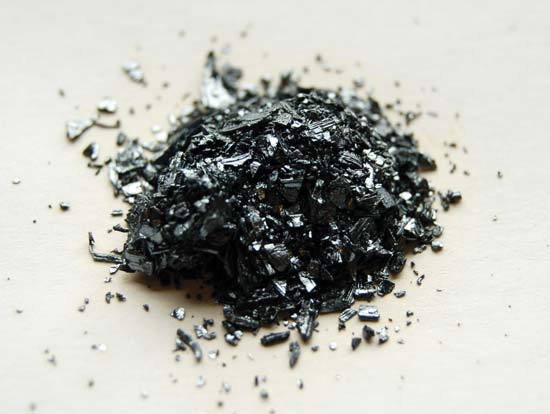

The image is of seaweed. Many species of seaweed contain iodine.
| Density | 4.933 |
| Melting Point | 113.7°C |
| Boiling Point | 184.4°C |
Uses
Photography was the first commercial use for iodine after Louis Daguerre, in 1839, invented a technique for producing images on a piece of metal. These images were called daguerreotypes.
Today, iodine has many commercial uses. Iodide salts are used in pharmaceuticals and disinfectants, printing inks and dyes, catalysts, animal feed supplements and photographic chemicals. Iodine is also used to make polarising filters for LCD displays.
Iodide is added in small amounts to table salt, in order to avoid iodine deficiency affecting the thyroid gland. The radioactive isotope iodine-131 is sometimes used to treat cancerous thyroid glands.
In the early 1800s, Bernard Courtois of Paris manufactured saltpetre (potassium nitrate, KNO3) and used seaweed ash as his source of potassium. One day in 1811, he added sulfuric acid and saw purple fumes which condensed to form crystals with a metallic lustre. Courtois guessed this was a new element. He gave some to Charles-Bernard Desormes and to Nicolas Clément who carried out a systematic investigation and confirmed that it was. In November 1813, they exhibited iodine at the Imperial Institute in Paris. That it really was new was proved by Joseph Gay-Lussac and confirmed by the Humphry Davy who was visiting Paris. Davy sent a report to the Royal Institution in London where it was mistakenly assumed he was the discoverer, a belief that persisted for more than 50 years.